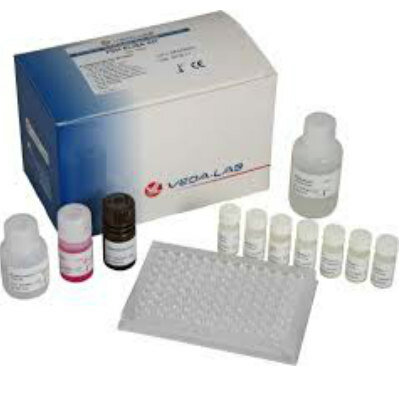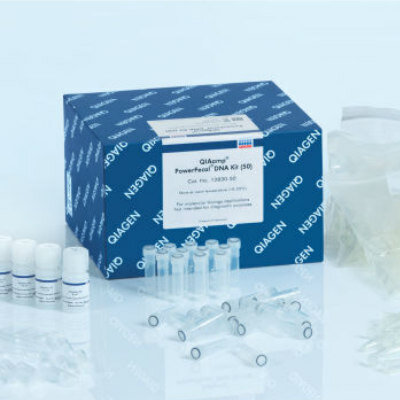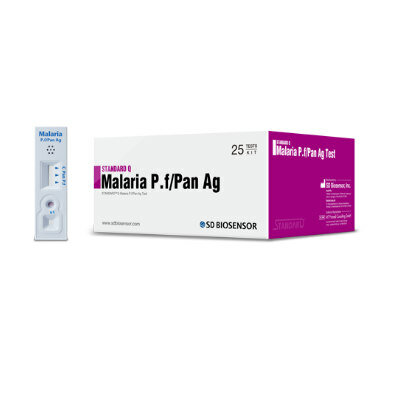TTMV-HPV DNA Biomarker Predicts Recurrence of Oropharynx Cancer
|
By LabMedica International staff writers Posted on 03 Mar 2022 |
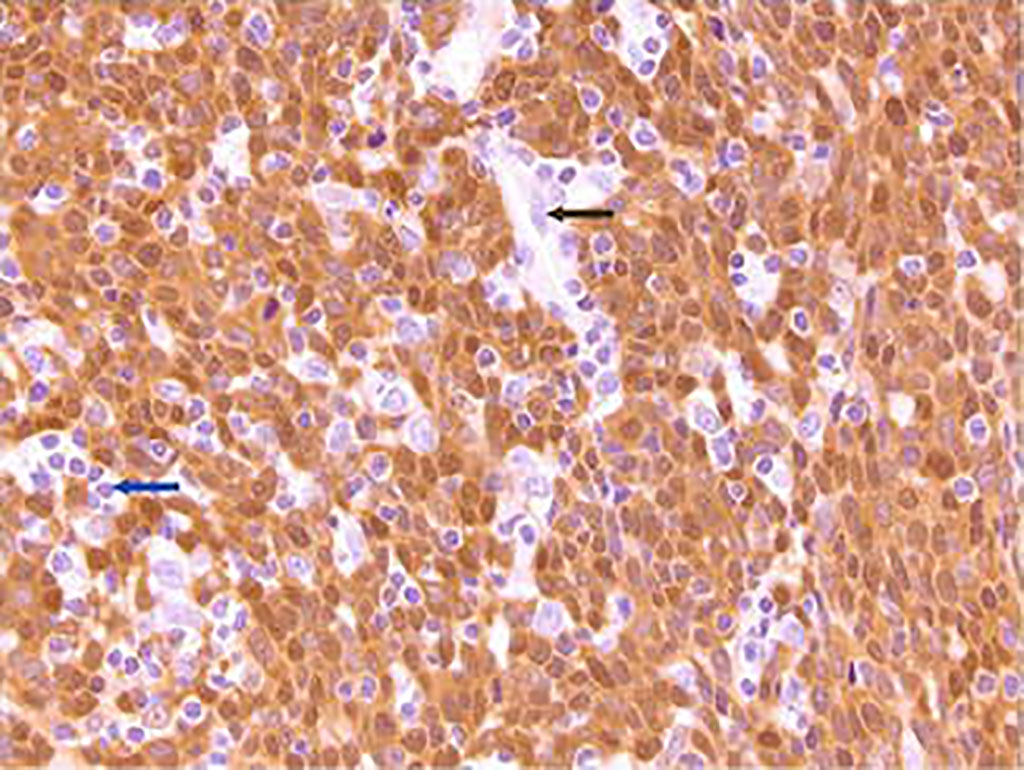
A large, multi-institutional study demonstrates that a blood test to detect circulating tumor DNA can accurately predict recurrence of HPV-driven oropharyngeal cancer following treatment. Results also indicate that the biomarker test may detect recurrent disease earlier than imaging or other standard methods of post-treatment surveillance, allowing physicians to personalize treatment more quickly for patients whose cancer returns.
Despite generally favorable outcomes, up to 20% of patients with human papillomavirus (HPV)-driven oropharyngeal squamous cell carcinoma (OPSCC) will experience recurrence within five years of curative-intent therapy; approximately half of recurrences present with distant disease.
Currently, recurrence is detected primarily through imaging and physical exams, but there is wide variability in the use and frequency of these surveillance methods. There are indications that a biomarker test may detect recurrent disease earlier than imaging or other standard methods of post-treatment surveillance, allowing physicians to personalize treatment more quickly for patients whose cancer returns.
Oncologists at the Dana-Farber Cancer Institute (Boston, MA, USA) and their colleagues demonstrated in large, multi-institutional study that a blood test to detect circulating tumor DNA can accurately predict recurrence of HPV-driven oropharyngeal cancer following treatment. In a retrospective clinical case series included 1,076 consecutive patients across 124 USA sites who were > 3 months post therapy for HPV-driven OPSCC and who had one or more circulating cell-free tumor tissue modified HPV DNA (TTMV-HPV DNA) test (NavDx, Naveris Laboratories, Natick, MA, USA) between 2/6/2020 and 6/11/2021. TTMV-HPV DNA for HPV subtypes 16, 18, 31, 33, and 35 was analyzed with ultrasensitive digital droplet PCR. Test results were compared to the results of subsequent clinical evidence of OPSCC, using nasopharyngolaryngoscopy and/or radiologic (CT, MRI, or PET-CT) evaluations and/or tissue biopsy.
The investigators reported that circulating TTMV-HPV DNA was positive in 80/1,076 patients (7.4%, TTMV range: 7 - 123,148 fragments (frgs)/mL) tested after definitive therapy. At the first positive surveillance test, 21/80 (26.2%) patients had known recurrence while 59/80 (73.8%) had no other evidence of disease (NED) or indeterminate disease status. Clinical follow-up was available on all patients. Among the 59 positive tests without clinically known recurrence, 55 (93.2%, TTMV range: 8 - 23,296 frgs/mL) had confirmed recurrence identified with 52 HPV 16-driven, and 1 and 2 with HPV 31 or 35-driven OPSCC respectively. Two patients have clinically suspicious lesions with negative biopsies, one with a base of tongue ulcer and one with a pulmonary nodule (TTMV range: 9-67 frgs/mL) and two are currently clinically NED (TTMV range: 16-79 frgs/mL) with scheduled repeat TTMV and radiologic surveillance.
Glenn J. Hanna, MD, an Assistant Professor of Medicine and lead author of the study, said, “Most patients had no other evidence of disease or clinically indeterminate disease status at the time of their first positive biomarker test. Incorporating a test for TTMV-HPV DNA into routine post-treatment follow-up can enable physicians to detect recurrent cancers earlier and allow us to start recommended interventions more quickly to improve outcomes.”
The authors concluded that their findings demonstrated the clinical validity and utility of circulating TTMV-HPV DNA testing in daily clinical practice as an effective surveillance tool for identifying patients with active and occult recurrent HPV-driven OPSCC. To date the positive predictive value for recurrence or persistence of HPV-driven OPSCC is 95.0% (76/80), which may increase with additional follow-up of cases remaining in active surveillance. Notably, the presence of circulating TTMV-HPV DNA was the first indication of recurrence for 72.4% of cases. These data will help inform clinical and guideline-endorsed strategies concerning the inclusion of circulating TTMV HPV-DNA as a biomarker of molecularly detectable HPV-driven OPSCC in the setting of recurrence surveillance. The study was presented at the on February 24, 2022, at the 2022 Multidisciplinary Head and Neck Cancers Symposium held in Phoenix, AZ, USA.
Related Links:
Dana-Farber Cancer Institute
Naveris Laboratories
Latest Pathology News
- Spit Test More Accurate at Identifying Future Prostate Cancer Risk
- DNA Nanotechnology Boosts Sensitivity of Test Strips
- Novel UV and Machine Learning-Aided Method Detects Microbial Contamination in Cell Cultures
- New Error-Corrected Method to Help Detect Cancer from Blood Samples Alone
- "Metal Detector" Algorithm Hunts Down Vulnerable Tumors
- Novel Technique Uses ‘Sugar’ Signatures to Identify and Classify Pancreatic Cancer Cell Subtypes
- Advanced Imaging Reveals Mechanisms Causing Autoimmune Disease
- AI Model Effectively Predicts Patient Outcomes in Common Lung Cancer Type
- AI Model Predicts Patient Response to Bladder Cancer Treatment
- New Laser-Based Method to Accelerate Cancer Diagnosis
- New AI Model Predicts Gene Variants’ Effects on Specific Diseases
- Powerful AI Tool Diagnoses Coeliac Disease from Biopsy Images with Over 97% Accuracy
- Pre-Analytical Conditions Influence Cell-Free MicroRNA Stability in Blood Plasma Samples
- 3D Cell Culture System Could Revolutionize Cancer Diagnostics
- Painless Technique Measures Glucose Concentrations in Solution and Tissue Via Sound Waves
- Skin-Based Test to Improve Diagnosis of Rare, Debilitating Neurodegenerative Disease
Channels
Clinical Chemistry
view channel
‘Brilliantly Luminous’ Nanoscale Chemical Tool to Improve Disease Detection
Thousands of commercially available glowing molecules known as fluorophores are commonly used in medical imaging, disease detection, biomarker tagging, and chemical analysis. They are also integral in... Read more
Low-Cost Portable Screening Test to Transform Kidney Disease Detection
Millions of individuals suffer from kidney disease, which often remains undiagnosed until it has reached a critical stage. This silent epidemic not only diminishes the quality of life for those affected... Read more
New Method Uses Pulsed Infrared Light to Find Cancer's 'Fingerprints' In Blood Plasma
Cancer diagnoses have traditionally relied on invasive or time-consuming procedures like tissue biopsies. Now, new research published in ACS Central Science introduces a method that utilizes pulsed infrared... Read moreHematology
view channel
New Scoring System Predicts Risk of Developing Cancer from Common Blood Disorder
Clonal cytopenia of undetermined significance (CCUS) is a blood disorder commonly found in older adults, characterized by mutations in blood cells and a low blood count, but without any obvious cause or... Read more
Non-Invasive Prenatal Test for Fetal RhD Status Demonstrates 100% Accuracy
In the United States, approximately 15% of pregnant individuals are RhD-negative. However, in about 40% of these cases, the fetus is also RhD-negative, making the administration of RhoGAM unnecessary.... Read moreImmunology
view channel
Stem Cell Test Predicts Treatment Outcome for Patients with Platinum-Resistant Ovarian Cancer
Epithelial ovarian cancer frequently responds to chemotherapy initially, but eventually, the tumor develops resistance to the therapy, leading to regrowth. This resistance is partially due to the activation... Read more
Machine Learning-Enabled Blood Test Predicts Immunotherapy Response in Lymphoma Patients
Chimeric antigen receptor (CAR) T-cell therapy has emerged as one of the most promising recent developments in the treatment of blood cancers. However, over half of non-Hodgkin lymphoma (NHL) patients... Read moreMicrobiology
view channel
Handheld Device Delivers Low-Cost TB Results in Less Than One Hour
Tuberculosis (TB) remains the deadliest infectious disease globally, affecting an estimated 10 million people annually. In 2021, about 4.2 million TB cases went undiagnosed or unreported, mainly due to... Read more
New AI-Based Method Improves Diagnosis of Drug-Resistant Infections
Drug-resistant infections, particularly those caused by deadly bacteria like tuberculosis and staphylococcus, are rapidly emerging as a global health emergency. These infections are more difficult to treat,... Read more
Breakthrough Diagnostic Technology Identifies Bacterial Infections with Almost 100% Accuracy within Three Hours
Rapid and precise identification of pathogenic microbes in patient samples is essential for the effective treatment of acute infectious diseases, such as sepsis. The fluorescence in situ hybridization... Read morePathology
view channel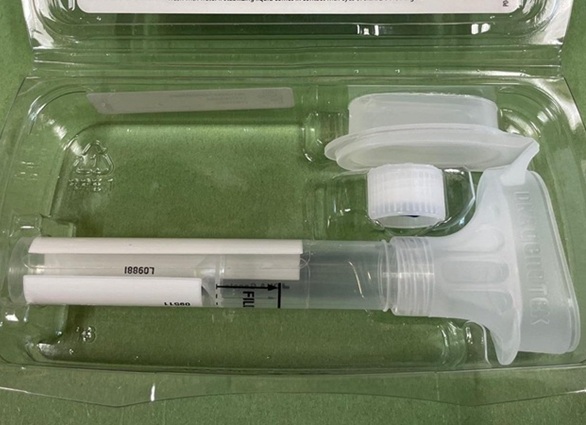
Spit Test More Accurate at Identifying Future Prostate Cancer Risk
Currently, blood tests that measure the level of a protein called prostate-specific antigen (PSA) are commonly used to identify men at higher risk for prostate cancer. This test is typically used based... Read moreDNA Nanotechnology Boosts Sensitivity of Test Strips
Since the Covid-19 pandemic, most people have become familiar with paper-based rapid test strips, also known as lateral flow immunoassays (LFIAs). These tests are used to quickly detect biomarkers that... Read more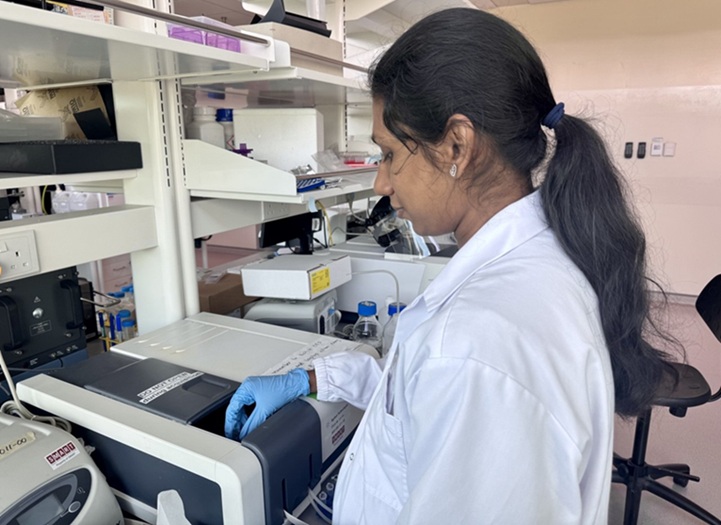
Novel UV and Machine Learning-Aided Method Detects Microbial Contamination in Cell Cultures
Cell therapy holds great potential in treating diseases such as cancers, inflammatory conditions, and chronic degenerative disorders by manipulating or replacing cells to restore function or combat disease.... Read moreTechnology
view channel
Disposable Microchip Technology Could Selectively Detect HIV in Whole Blood Samples
As of the end of 2023, approximately 40 million people globally were living with HIV, and around 630,000 individuals died from AIDS-related illnesses that same year. Despite a substantial decline in deaths... Read more
Pain-On-A-Chip Microfluidic Device Determines Types of Chronic Pain from Blood Samples
Chronic pain is a widespread condition that remains difficult to manage, and existing clinical methods for its treatment rely largely on self-reporting, which can be subjective and especially problematic... Read more
Innovative, Label-Free Ratiometric Fluorosensor Enables More Sensitive Viral RNA Detection
Viruses present a major global health risk, as demonstrated by recent pandemics, making early detection and identification essential for preventing new outbreaks. While traditional detection methods are... Read moreIndustry
view channel
Cepheid and Oxford Nanopore Technologies Partner on Advancing Automated Sequencing-Based Solutions
Cepheid (Sunnyvale, CA, USA), a leading molecular diagnostics company, and Oxford Nanopore Technologies (Oxford, UK), the company behind a new generation of sequencing-based molecular analysis technologies,... Read more
Grifols and Tecan’s IBL Collaborate on Advanced Biomarker Panels
Grifols (Barcelona, Spain), one of the world’s leading producers of plasma-derived medicines and innovative diagnostic solutions, is expanding its offer in clinical diagnostics through a strategic partnership... Read more




